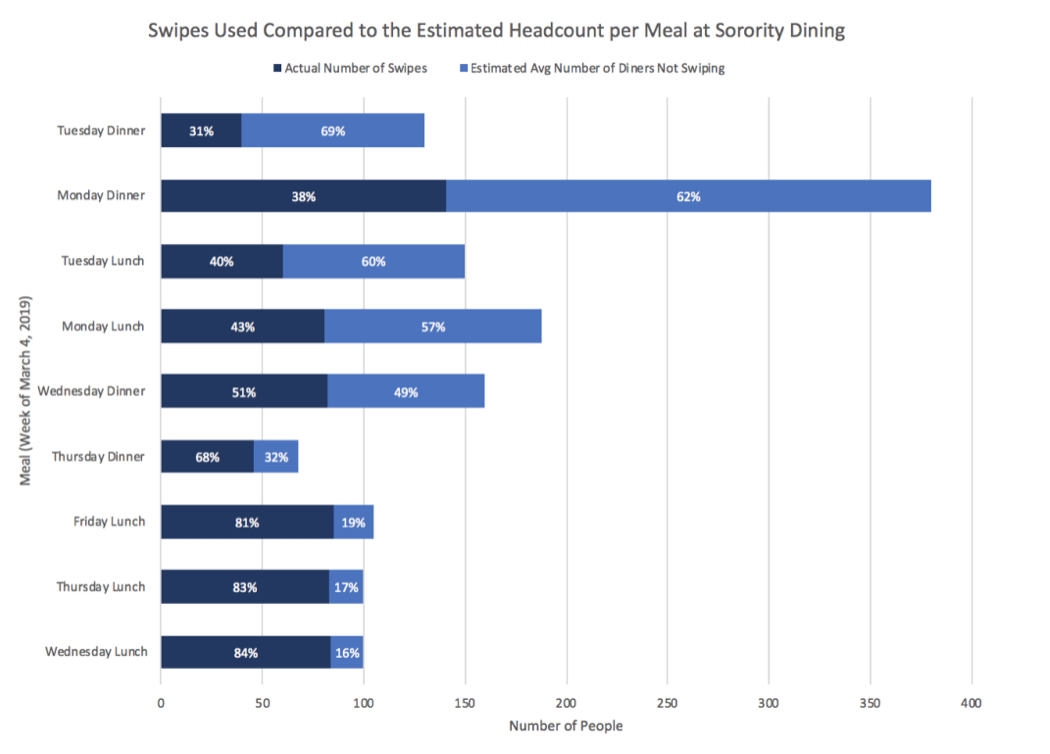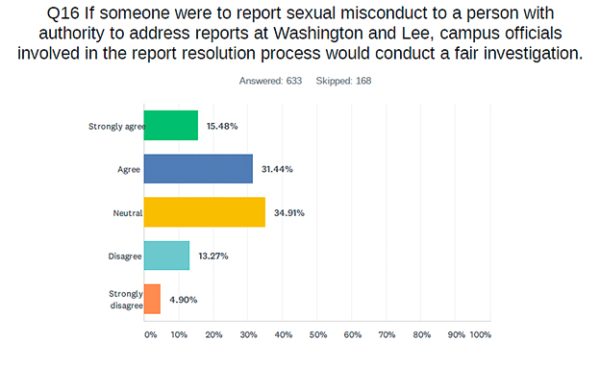Dining Services doubles down on checking meal swipes
The Executive Committee would not say if not swiping for a meal counts as an honor violation
Students returned this year to see the results of the mostly cosmetic renovation of D-hall. Photo by Elizabeth Bell, ’21.
Elizabeth Bell
October 1, 2019
The university’s dining services recently implemented a new strategy to make sure sorority women are swiping for meals, one year after swipe machines were installed in the sorority houses.
Students are now required to sign a sheet of paper with the honor pledge and list their student ID number to prove that they’ve swiped.
“The number of swipes this year [on sorority row] doesn’t appear to have changed drastically,” said Andrew Watling, the assistant director of dining services. “I think what we still need to figure out is whether we still have people who aren’t swiping.”
Last year, Dining Services noticed a disparity between the estimated headcount at each meal and the number of swipes, through a comparison of the amount of food consumed with the data collected from swipe machines.

To remind students to swipe for their meals this year, a member of the dining services staff watches the swipe machines at the sorority houses during meal hours.
“We haven’t seen a significant change, which is concerning” Watling said.
Not knowing how many people are eating during each meal makes it very difficult to run an effective dining program, he said.
Watling issued a warning in an email sent to all sorority members last March: “Not only is this our expectation, but it is your responsibility in conjunction with the honor code.”
Olivia Indelicato, ’21, one of the junior representatives on the Executive Committee, said she couldn’t comment on whether not swiping for a meal would be considered an honor violation because the honor system isn’t based on a specific code.
Maggie Phipps, ‘21, said she understands that when students don’t swipe for meals it places a financial burden on the school. But, she doesn’t think all of the students who don’t swipe for meals are doing it on purpose.
“The honor system is all about trust and I don’t think anyone is trying to violate anyone’s trust, Phipps said. “I think some of it is just habitual forgetting.”
As for the rest of campus, students returned this year to see the results of the mostly cosmetic renovation to The Marketplace, commonly referred to as D-hall, that took place at the end of last year. D-hall was closed for the last two weeks of spring term and part of the summer.
“This renovation is really just a patch to fix some things that needed addressing desperately,” Watling said. “With the hope that with some of the fundraising, they’ll be able to get a more significant renovation in a few years.”
The next renovation may take place in 2021 or 2022, but the timeline is still up in the air, he said.
In the renovation, the register and swipe machine were moved to just outside of D-hall. There’s also another dish return, brand new carpeting, tabletops and chairs and a fresh coat of blue paint.
The D-hall swipe machine was moved to create a more effective layout, not because of concerns about students not swiping, Watling said.
“This has less to do with swiping and more to do with just the flow because it opens up that busy corner a lot and makes it feel a lot nicer,” he said.
“I’m interested to see if the new cashier system increases efficiency or decreases efficiency during busy times of the day,” said Mathilde Sharman ‘20.
Some big changes were made to the Dhall menu, too. The “oven” section was renamed “chef’s table,” and includes more healthy options than in the past.
“We probably serve about half as much pizza over there as we were,” Watling said. “We’re doing a lot more of the bars and build your own noodle bowls over there, which lends itself to healthier options than pizza.”
The chef’s table also includes more upscale options than the oven did, like poke bowls, prosciutto and parm flatbreads and thin crust pizzas.
Dining services combined the V2 and daily dish sections to provide more diverse vegetarian and vegan options.
“We saw that V2 ended up being tofu, beans and rice almost everyday, which isn’t a good experience, and so we’ve tried to push past that.”
Students have responded positively to dining services’ efforts to provide more nutritious options.
“I think they’re responding as best they can to student feedback,” Phipps said. “I like that there’s consistent healthy options at sorority dining and more fruit at Dhall.”
When planning menus, dining services considers what dishes are popular and what dishes aren’t, Watling said.
“We were evaluating what people were eating and what wasn’t going well,” he said. “People were eating the healthier options more and they wanted cheeseburgers less and shrimp tacos more.”
But, if students don’t like what’s on the menu at Dhall one night, they can enjoy La Cantina, which will be available at Foodside.













